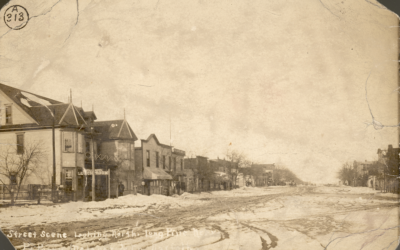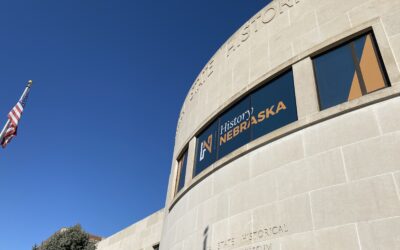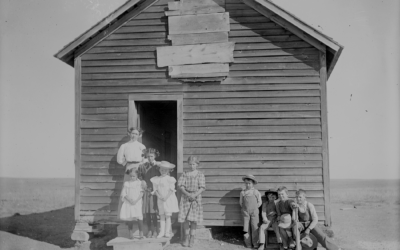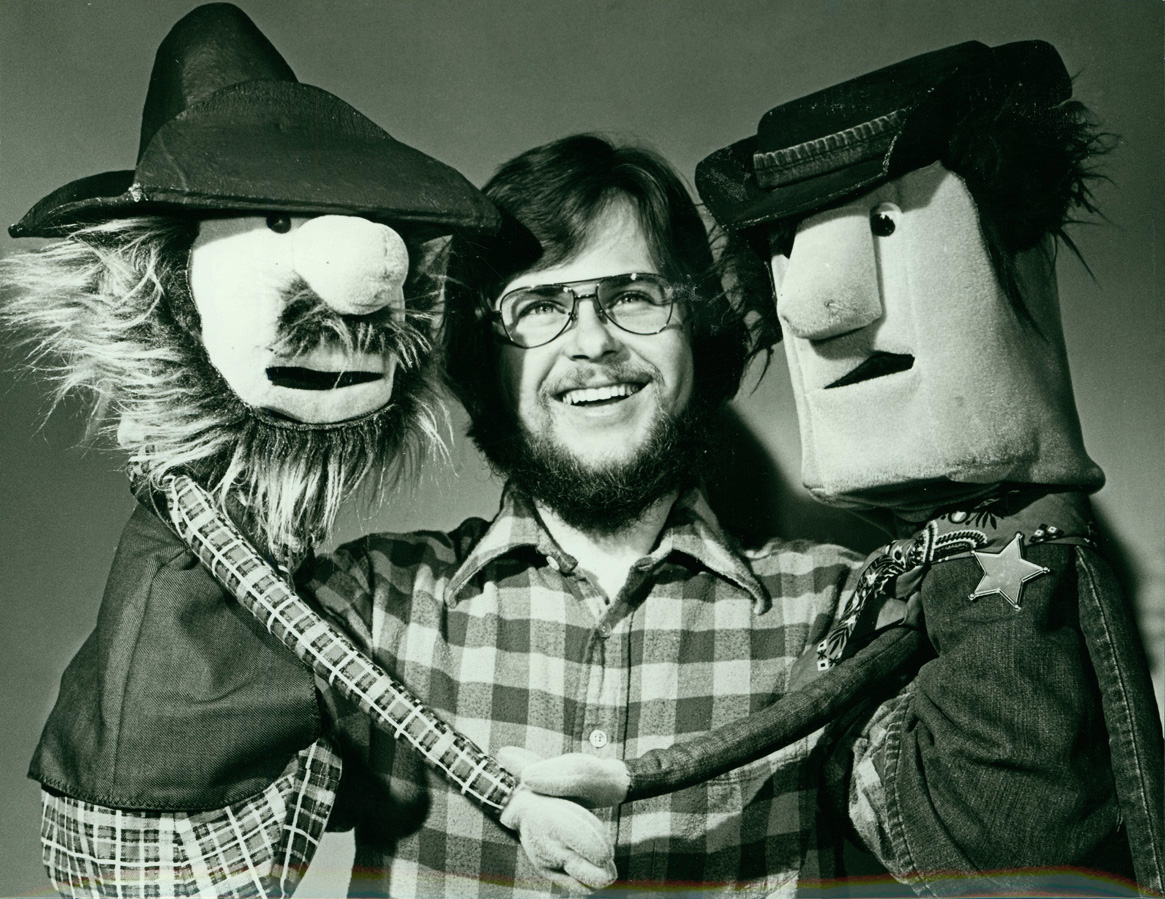 George Churley with Stumpy and Deputy Duke, two of the original Cartoon Corral puppets.
George Churley with Stumpy and Deputy Duke, two of the original Cartoon Corral puppets.
Not too long ago, we featured “Treasures from Nebraska Museums” in History Nebraska’s quarterly newsletter, and in small exhibits at the Nebraska History Museum. This project was a lot of fun, and we thank our colleagues at museums around the state for participating. When it debuted, we shared a few items from a new collection donated in 2013 by George Churley of Lincoln. Churley, a puppeteer and founder of the George Churley Puppet Company (1973-80), donated twenty-eight puppets as well as photographs and audiovisual materials.
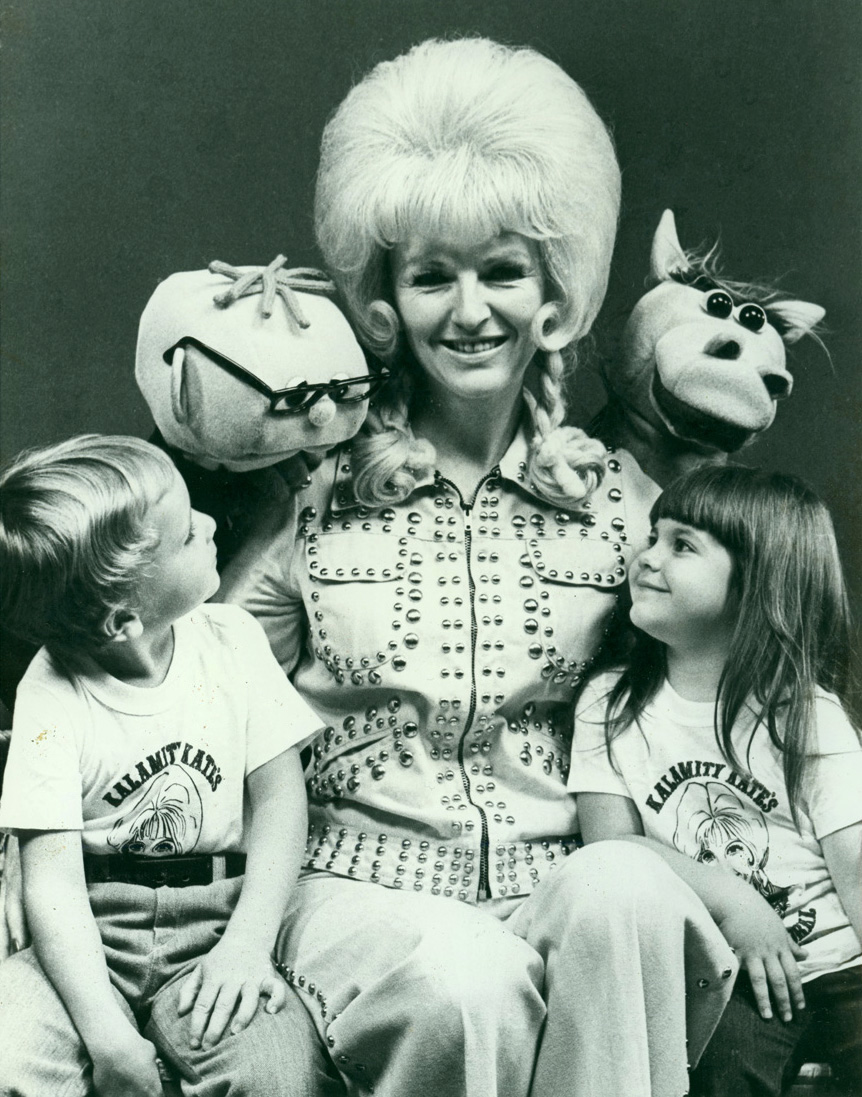 Kalamity Kate (Leta Powell Drake) poses with two young fans and puppets Hash T. Horse and Little Reggie.
Kalamity Kate (Leta Powell Drake) poses with two young fans and puppets Hash T. Horse and Little Reggie.
The company was best known for the puppets created for Kalamity Kate’s Cartoon Corral, a children’s television program shown on KOLN/KGIN. Churley served as a writer, producer, and puppeteer for the show from 1975 to 1980. With the cooperation of more than forty Nebraska schools, he also developed and produced a game show segment featuring fourth, fifth and sixth grade students titled Little Reggie’s Quiz Kids. This segment was chosen by the National Television Information Office as one of five nationwide examples of “excellence in local children’s programming”; three program clips appeared in a national special, Television in America: Children, Television and Change. The George Churley Puppet Company also traveled, performing live shows and workshops for kids. They presented more than 700 live performances in 16 states.


